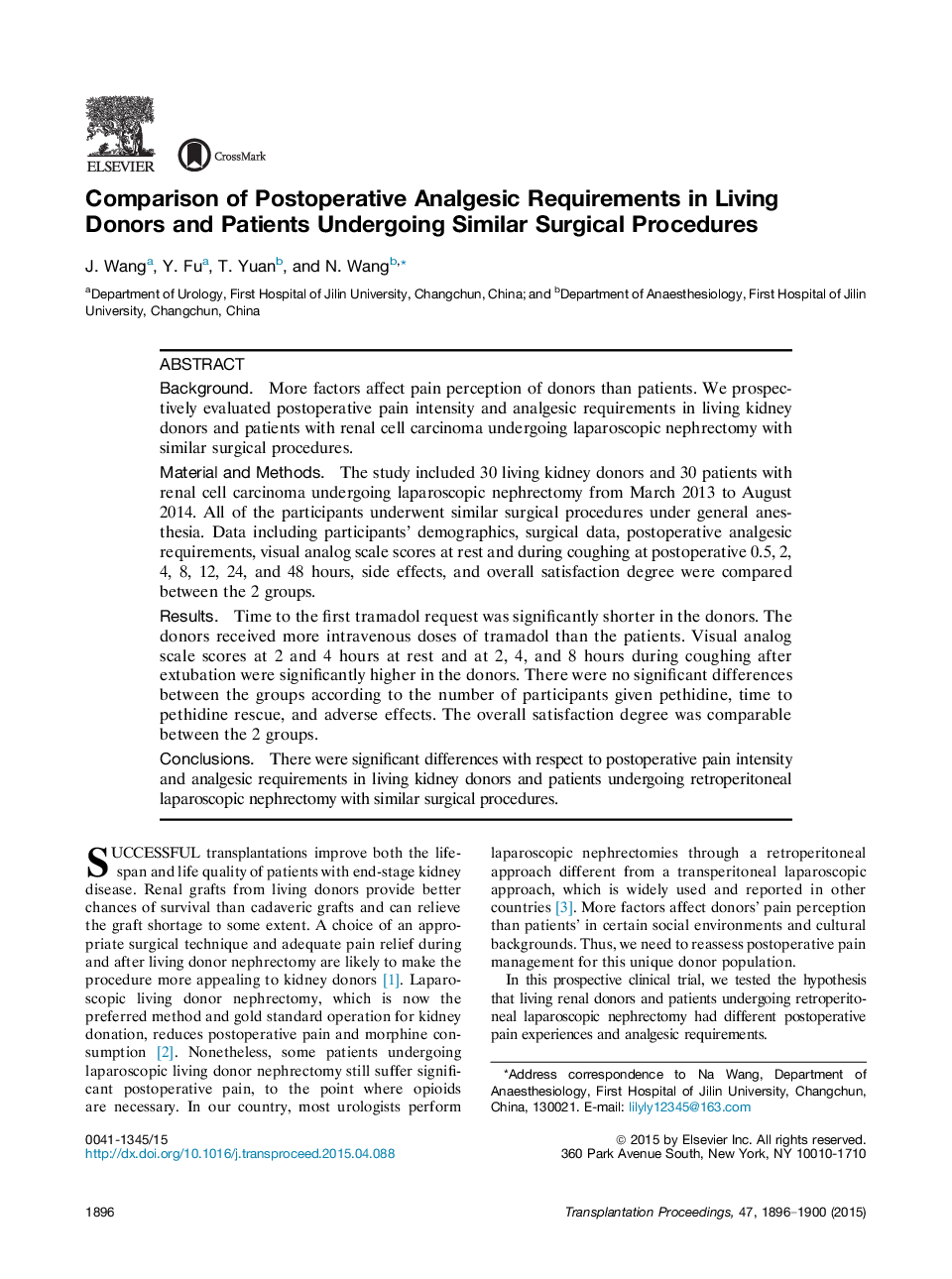| Article ID | Journal | Published Year | Pages | File Type |
|---|---|---|---|---|
| 6247232 | Transplantation Proceedings | 2015 | 5 Pages |
â¢Donors suffer more postoperative pain than patients.â¢Donors are associated with earlier and more postoperative analgesics administered.â¢Pain management of donors needs to be intensified.
BackgroundMore factors affect pain perception of donors than patients. We prospectively evaluated postoperative pain intensity and analgesic requirements in living kidney donors and patients with renal cell carcinoma undergoing laparoscopic nephrectomy with similar surgical procedures.Material and MethodsThe study included 30 living kidney donors and 30 patients with renal cell carcinoma undergoing laparoscopic nephrectomy from March 2013 to August 2014. All of the participants underwent similar surgical procedures under general anesthesia. Data including participants' demographics, surgical data, postoperative analgesic requirements, visual analog scale scores at rest and during coughing at postoperative 0.5, 2, 4, 8, 12, 24, and 48 hours, side effects, and overall satisfaction degree were compared between the 2 groups.ResultsTime to the first tramadol request was significantly shorter in the donors. The donors received more intravenous doses of tramadol than the patients. Visual analog scale scores at 2 and 4 hours at rest and at 2, 4, and 8 hours during coughing after extubation were significantly higher in the donors. There were no significant differences between the groups according to the number of participants given pethidine, time to pethidine rescue, and adverse effects. The overall satisfaction degree was comparable between the 2 groups.ConclusionsThere were significant differences with respect to postoperative pain intensity and analgesic requirements in living kidney donors and patients undergoing retroperitoneal laparoscopic nephrectomy with similar surgical procedures.
